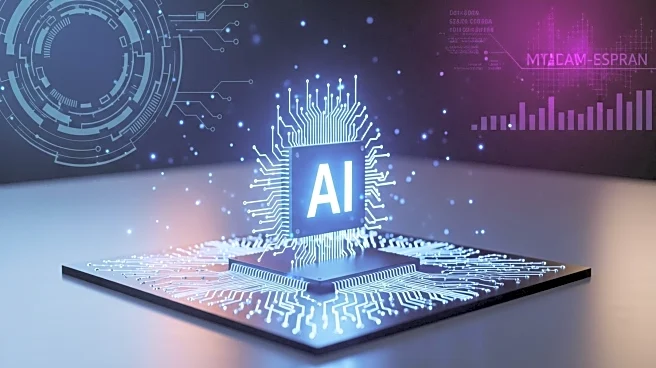What's Happening?
In the United States, a new trend is emerging among corporate leaders who are increasingly valuing a shrinking workforce as a status symbol. This shift is largely driven by the integration of artificial intelligence (AI) into business operations, which is enabling companies to achieve higher productivity with fewer employees. Notable examples include Amazon's CEO Andy Jassy, who announced plans to reduce the company's corporate workforce due to efficiency gains from AI. Similarly, Palantir Technologies' CEO Alex Karp aims to significantly increase revenue while reducing employee numbers. This trend is supported by the political climate, with figures like Elon Musk advocating for reduced headcounts in government and business. Companies like CH Robinson Worldwide and Northern Trust Corporation are leveraging AI to decouple headcount growth from business volume growth, thereby enhancing productivity and operating leverage.
Why It's Important?
The adoption of AI in corporate America is reshaping traditional business models by severing the link between job creation and productivity gains. This shift has significant implications for the U.S. economy and labor market. While higher revenue per employee is becoming a key metric for investors, indicating increased productivity and profit margins, it also raises concerns about job displacement and the future of work. As companies invest heavily in AI infrastructure, the potential reduction in demand for human labor could impact the broader economy and social contract. This trend highlights the need for policymakers and business leaders to address the challenges of workforce reduction and ensure that the benefits of AI-driven productivity are equitably distributed.
What's Next?
As AI continues to transform business operations, companies are likely to further integrate these technologies to enhance efficiency and productivity. This could lead to more widespread workforce reductions across various sectors. Investors and stakeholders will be closely monitoring how companies balance AI adoption with workforce management. Additionally, there may be increased pressure on policymakers to develop strategies that mitigate the negative impacts of job displacement and support workers in transitioning to new roles. The ongoing dialogue around AI's role in the economy will likely influence future regulatory and business decisions.
Beyond the Headlines
The ethical and social implications of AI-driven workforce reductions are significant. As companies prioritize efficiency and productivity, there is a risk of exacerbating income inequality and undermining job security for many workers. The potential for AI to replace human labor raises questions about the future of work and the need for new social safety nets. Furthermore, the emphasis on revenue per employee as a success metric may lead to a reevaluation of how business success is measured, potentially shifting focus from growth and expansion to sustainability and innovation.











